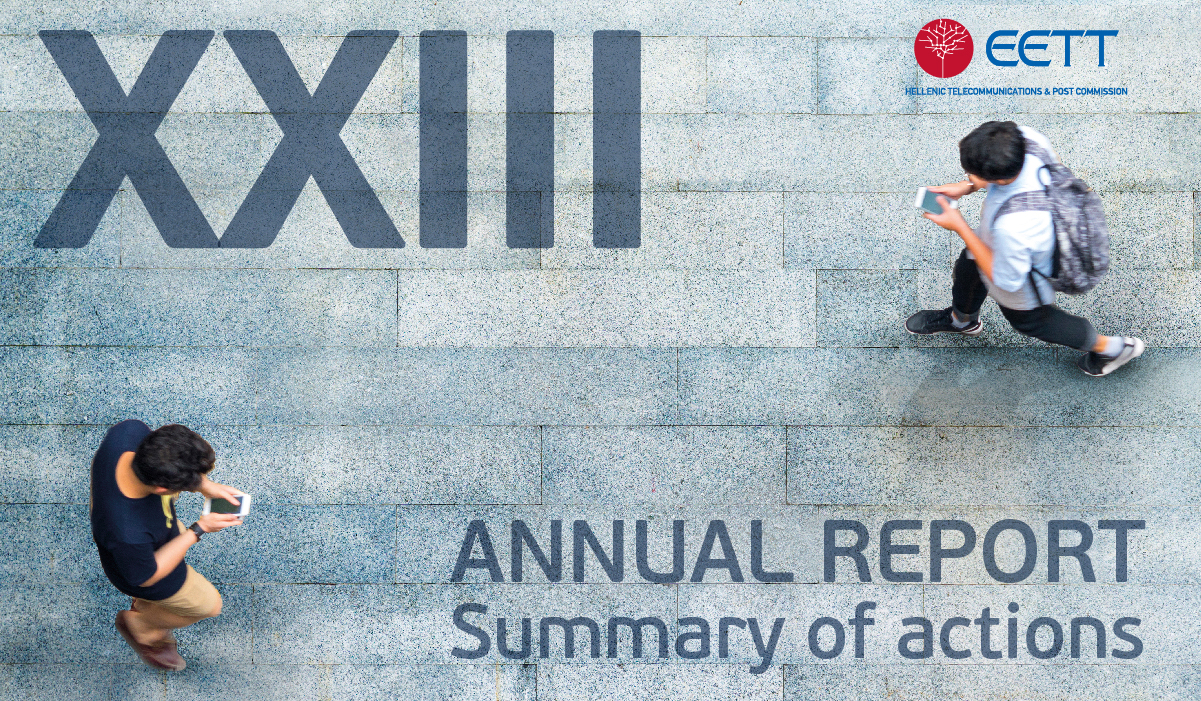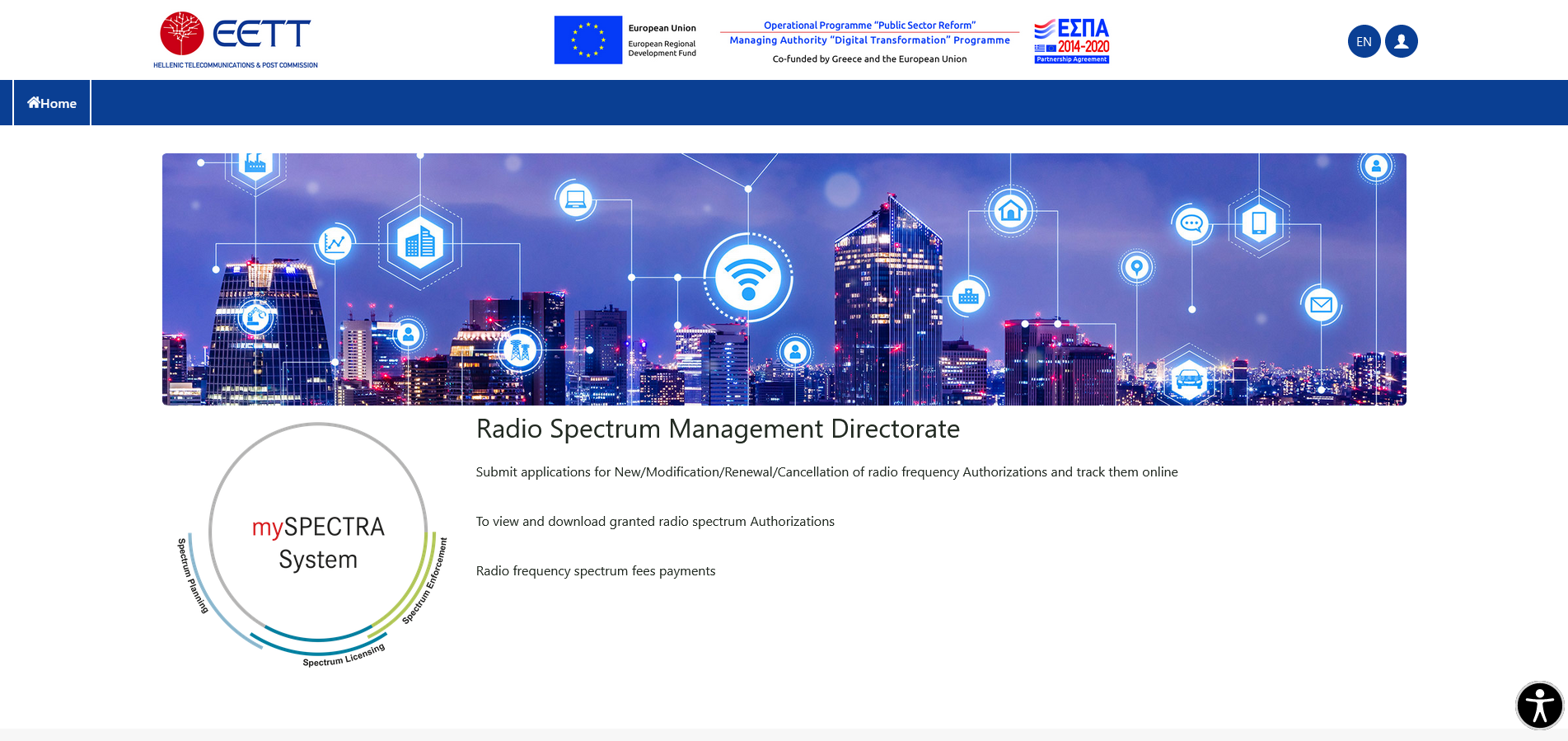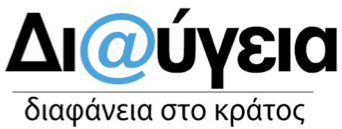Find below information about the use of radio frequencies and interferences, as well as the granting of rights and the supervisory role of EETT.
Radio frequencies
Radio frequencies are widely used by companies, state authorities, organizations and individual users for the provision of services or for serving their own needs. A typical example is the use of radio frequencies by:
- Mobile telephony providers for the provision of services to their subscribers.
- Broadcasting network providers for broadcasting television programs to the general public.
- Radio stations for transferring the signal from the point of production to the general public.
- The Hellenic Civil Aviation Authority (CAA) for the communication of aircrafts with ground operations, as well as by other state bodies and agencies (e.g. National Center of Emergency Care-EKAV and Fire Department) to cover their communication needs.
- Professionals (e.g. radio taxi service) to meet their communication needs.
Radio frequencies are also used, for instance, for the operation of cordless phones and wireless networks (WiFi), as well as remote control systems (alarms, garage doors, etc.).
Interference
Interference is any signal transmission that:
- Disrupts wireless communications, such as mobile telephony, television and radio broadcasting, telecommand, WiFi networks and radio amateur stations.
- Creates problems to the operation of wired networks and electronic/electrical equipment, such as corded phones, speakers, video door intercoms, modem/router.
Granting of rights - Monitoring
In certain cases, the use of radio frequencies requires rights of use granted by EETT. In particular, rights of use are required where it is necessary to ensure avoidance of inference between spectrum users and the technical quality of provided services (e.g., mobile telephony, state networks), but also the efficient use of radio spectrum. In these cases, users are entitled to protection against interference.
The users of radio frequencies, regardless of their obligation to acquire a right of use, are required to ensure that their equipment complies with the requirements provided for by applicable legislation.
It is pointed out that in all the above-mentioned cases, EETT supervises and monitors the proper and legal use of the radio spectrum. Within the framework of inspections, EETT examines:
- Interference to licensed services, such as mobile telephony (e.g. from wireless non CE-marked DECT devices), special radio networks (e.g. from telecommand systems due to fault), wireless state networks (e.g. the networks of the Hellenic Civil Aviation Authority [CAA] and the networks of emergency services).
- The legal use of radio spectrum (e.g., the use of radio frequencies for program transferring by radio stations).






